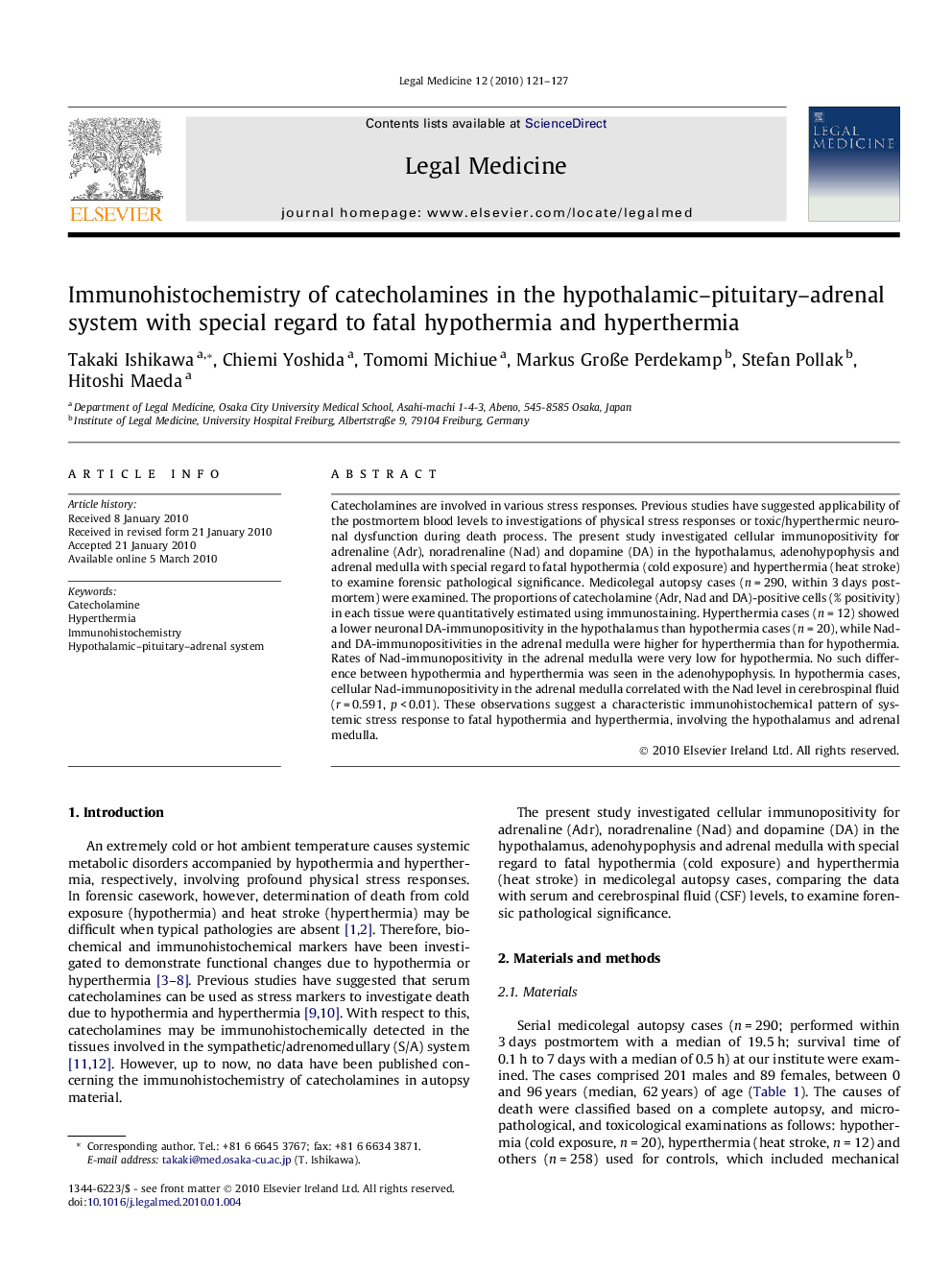| Article ID | Journal | Published Year | Pages | File Type |
|---|---|---|---|---|
| 104250 | Legal Medicine | 2010 | 7 Pages |
Catecholamines are involved in various stress responses. Previous studies have suggested applicability of the postmortem blood levels to investigations of physical stress responses or toxic/hyperthermic neuronal dysfunction during death process. The present study investigated cellular immunopositivity for adrenaline (Adr), noradrenaline (Nad) and dopamine (DA) in the hypothalamus, adenohypophysis and adrenal medulla with special regard to fatal hypothermia (cold exposure) and hyperthermia (heat stroke) to examine forensic pathological significance. Medicolegal autopsy cases (n = 290, within 3 days postmortem) were examined. The proportions of catecholamine (Adr, Nad and DA)-positive cells (% positivity) in each tissue were quantitatively estimated using immunostaining. Hyperthermia cases (n = 12) showed a lower neuronal DA-immunopositivity in the hypothalamus than hypothermia cases (n = 20), while Nad- and DA-immunopositivities in the adrenal medulla were higher for hyperthermia than for hypothermia. Rates of Nad-immunopositivity in the adrenal medulla were very low for hypothermia. No such difference between hypothermia and hyperthermia was seen in the adenohypophysis. In hypothermia cases, cellular Nad-immunopositivity in the adrenal medulla correlated with the Nad level in cerebrospinal fluid (r = 0.591, p < 0.01). These observations suggest a characteristic immunohistochemical pattern of systemic stress response to fatal hypothermia and hyperthermia, involving the hypothalamus and adrenal medulla.
